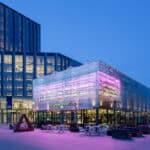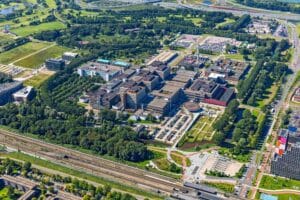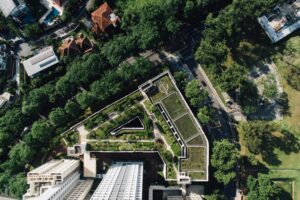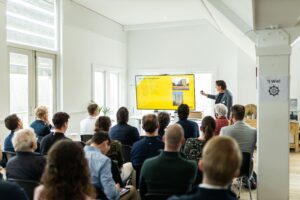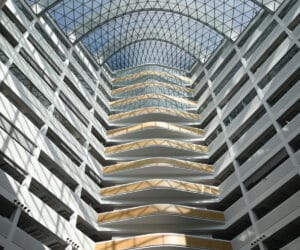
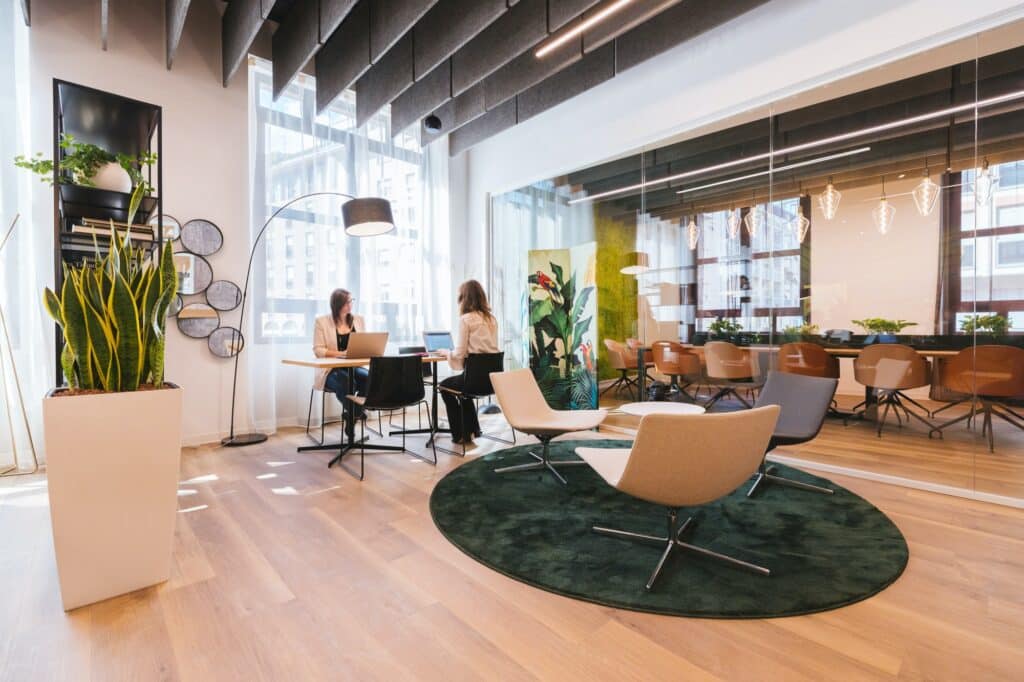
Smart Building Technology: everyone’s talking about it, but what is it?
Floor Rekers has been researching Smart Building Technology for the past few months. She examined a number of examples at CFP, talked to building managers and experts and investigated how Smart Building Technology can be optimally implemented at companies.
Technology and society come together in the built environment
Floor is studying architecture, as well as Science, Business & Innovation. ‘It is the ideal combination between technology on the one hand and the social aspect of the built environment on the other. In my research I focus on Smart Building Technology (SBT). I saw this topic featuring in the news more and more often, which aroused my interest. The subject appeals to me because SBT allows you to easily measure how sustainable a building is. You immediately see the impact of every change you make. I was curious to see how property managers view this, which is why I ended up at CFP for my research.’
Smart Building Technology: what is it?
Green, smart buildings are popular. More and more terminology pops up and the term Smart Building Technology also has many interpretations. ‘That’s why I started my research with the question: what exactly is Smart Building Technology? Through interviews with various experts, I tried to find an answer to this question. The answer turned out to be different for each expert.” On the basis of all these different answers, Floor arrived at the following definition;
Smart Building Technology is a self-learning technology that optimises buildings to enhance the comfort and well-being of the user.
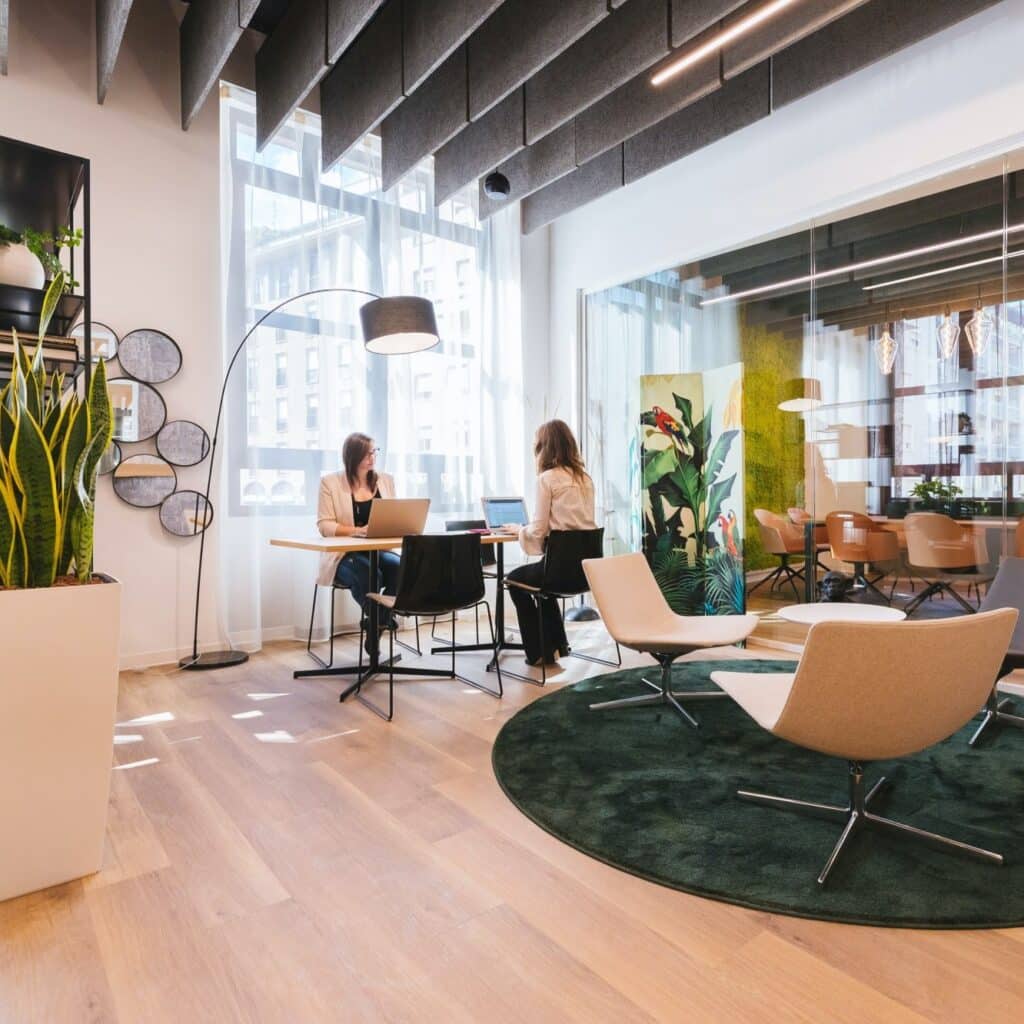
Floor: ‘What is the difference between a smart building and an automated building? In an automated building, building settings must be programmed by the technical manager. A smart building has the ability to do this itself with the help of artificial intelligence and data. This makes the building not only automated but also self-learning and optimising.’
Not a product, but a tool for optimisation
Smart Building Technology is therefore not a product in its own right, but a tool for optimisation. Having acquired this knowledge, Floor went on to talk to building managers. ‘During the interviews, I noticed that SBT is often seen as high-end and expensive, but it doesn’t have to be. Its complexity and the many possible technologies mean that people are often unaware of what it actually involves. But if you give some examples, it turns out that it can also be simple. Take, for example, the optimisation of your climate systems. There are no high costs involved and you will often recover the costs incurred in no more than three years through energy savings. What makes the implementation of Smart Building Technology difficult, however, is that you have to deal with many different stakeholders, such as building managers, users and owners. If one stakeholder does not cooperate, the result is immediately less successful.’
Smart Building Technology linked to business goals
Floor’s research shows that the implementation of Smart Building Technology as an end in itself is not successful in many cases. ‘Start by mapping out your overall business goals and then investigate whether and how Smart Building Technology can contribute to them. By using Smart Building Technology not as an end but as a means, it becomes clear which technologies are relevant to you and what the business case for your specific solution is.’
A practical example

Smart Building Technology is not just one measure or one technology to be applied. It is all about an ideal technology recipe, aligned with the business goals. Floor takes The Edge in Amsterdam as an example. This building has been declared the most sustainable and smart building in the world. It has a BREEAM score of 98.36% and contains 20,000 sensors that automatically register and optimise everything: ventilation, heating and lighting, but also hygiene, occupancy, travel times, available parking spaces, stimulating physical activity and so on.
‘You can ask yourself whether all these sensors are necessary to become the most sustainable building in the world,’ says Floor. Nevertheless, the reason why Smart Building Technology was applied in this way in The Edge can be explained. ‘In this case, improving the building’s sustainability had a broader goal than just reducing energy consumption, namely increasing the attractiveness for the labour market.’ Hardly surprising, Floor believes, because 63% of the employees consider it important to work in a sustainable building. ‘The Edge is therefore a very interesting building for obtaining insights into the many possibilities offered by Smart Building Technology. But remember, not all of these technologies need to be relevant to everyone. So when implementing Smart Building Technology, always keep asking yourself what your original goal was and use this as a basis for your ideal recipe.’

About Floor Rekers
Floor Rekers has now completed both a Bachelor of Architecture at TU Delft and a Bachelor of Science, Business and Innovation (SBI) at VU University Amsterdam. For her graduation thesis for SBI, she researched Smart Building Technology and its practical implementation. Her thesis was awarded an 8.5.
If you want to know more about Smart Building Technology or if you have any questions about this article, please contact Floor Rekers.

